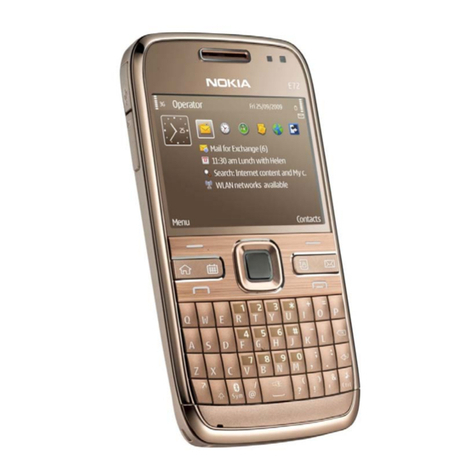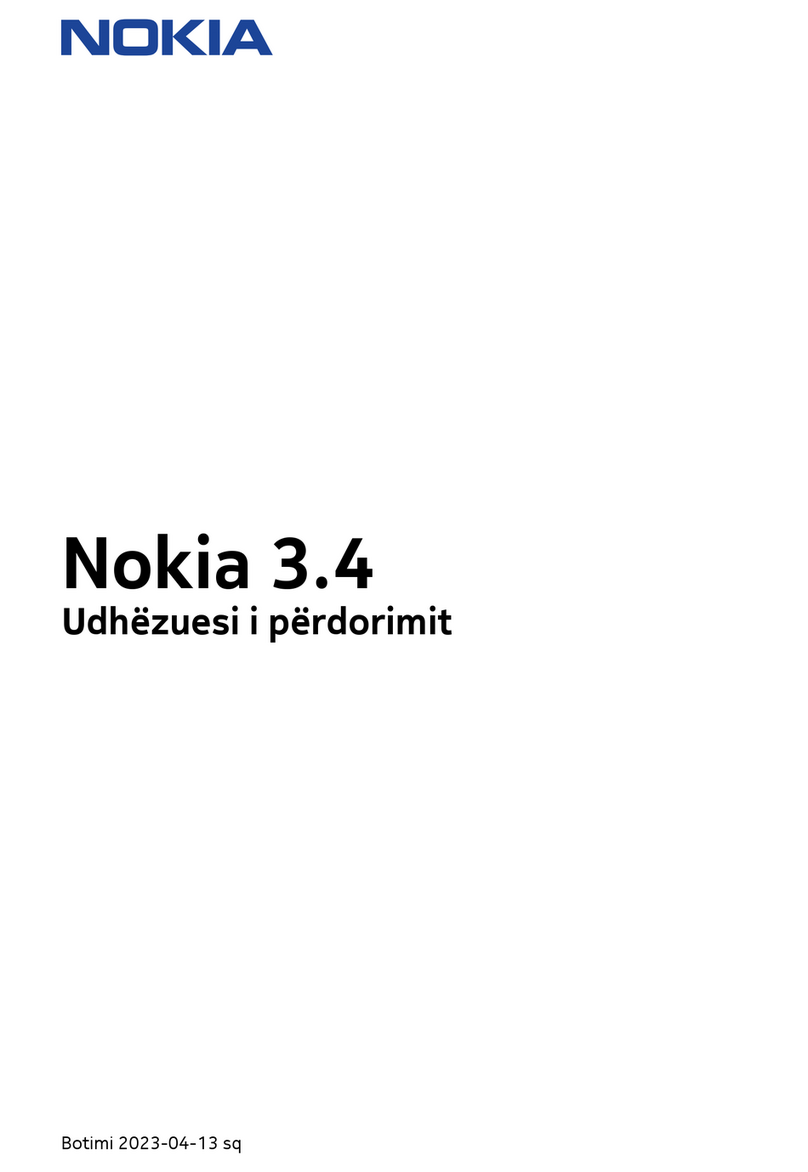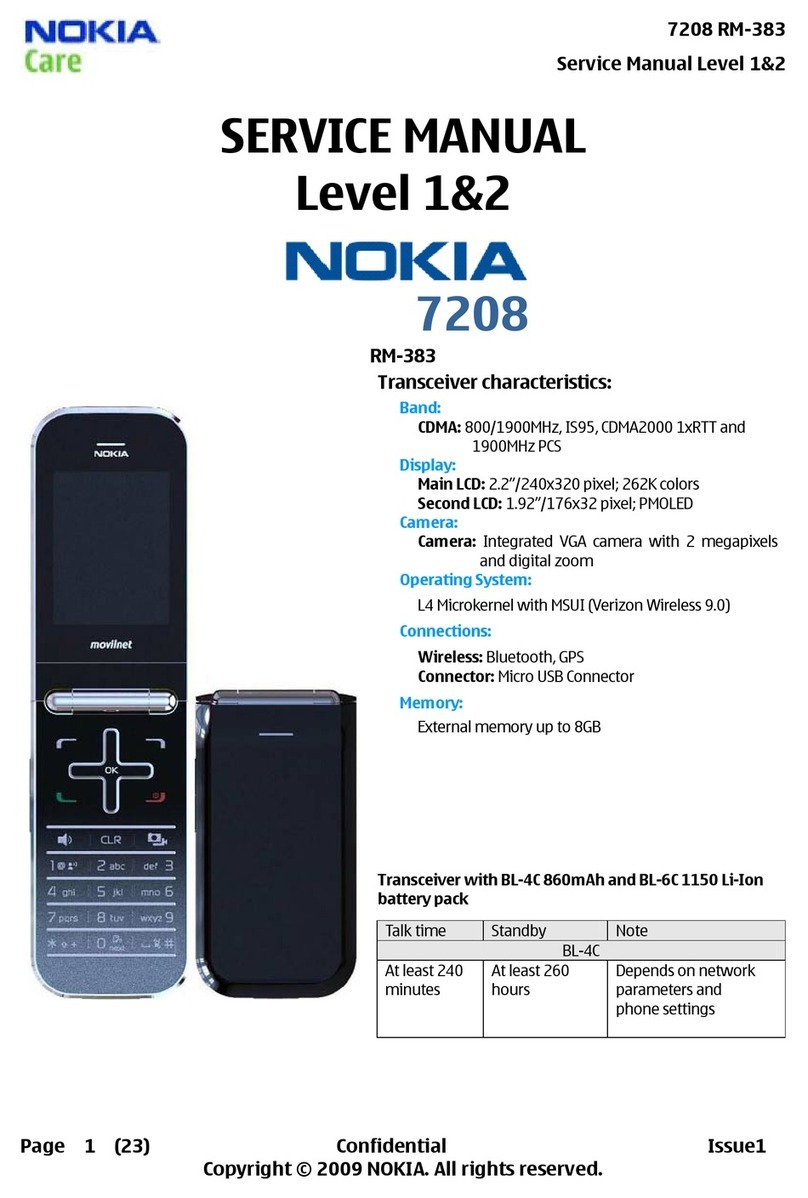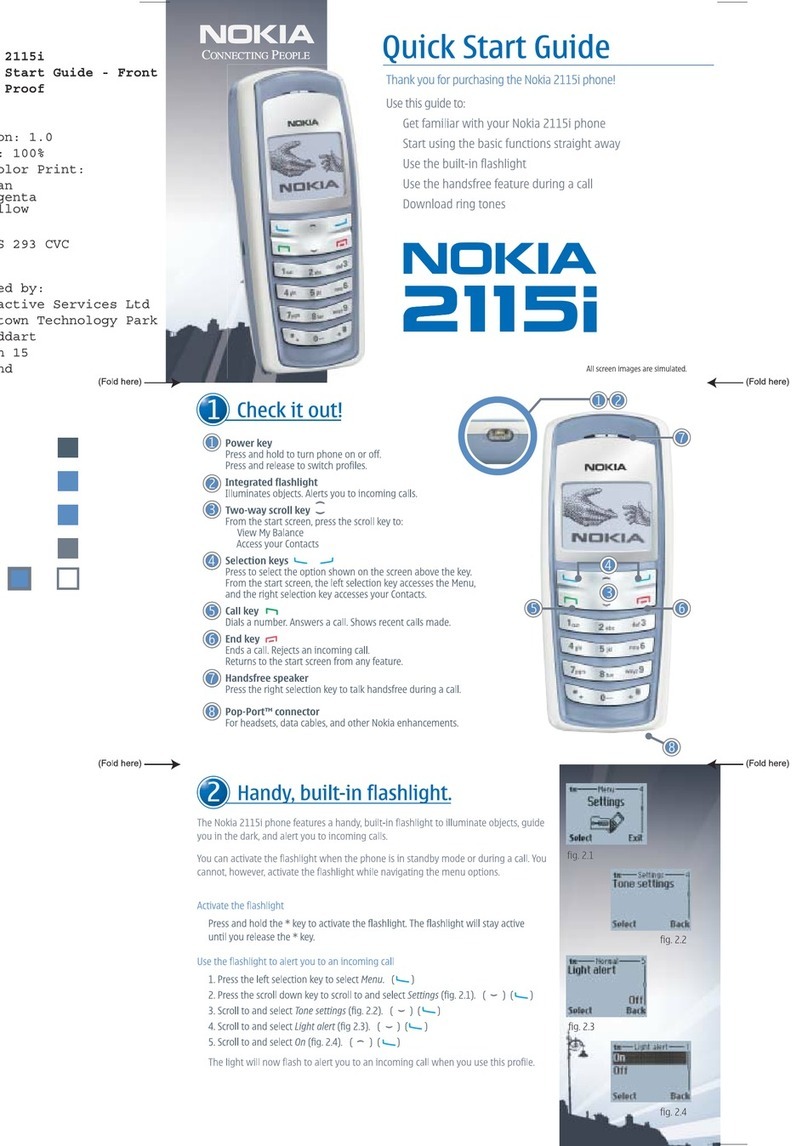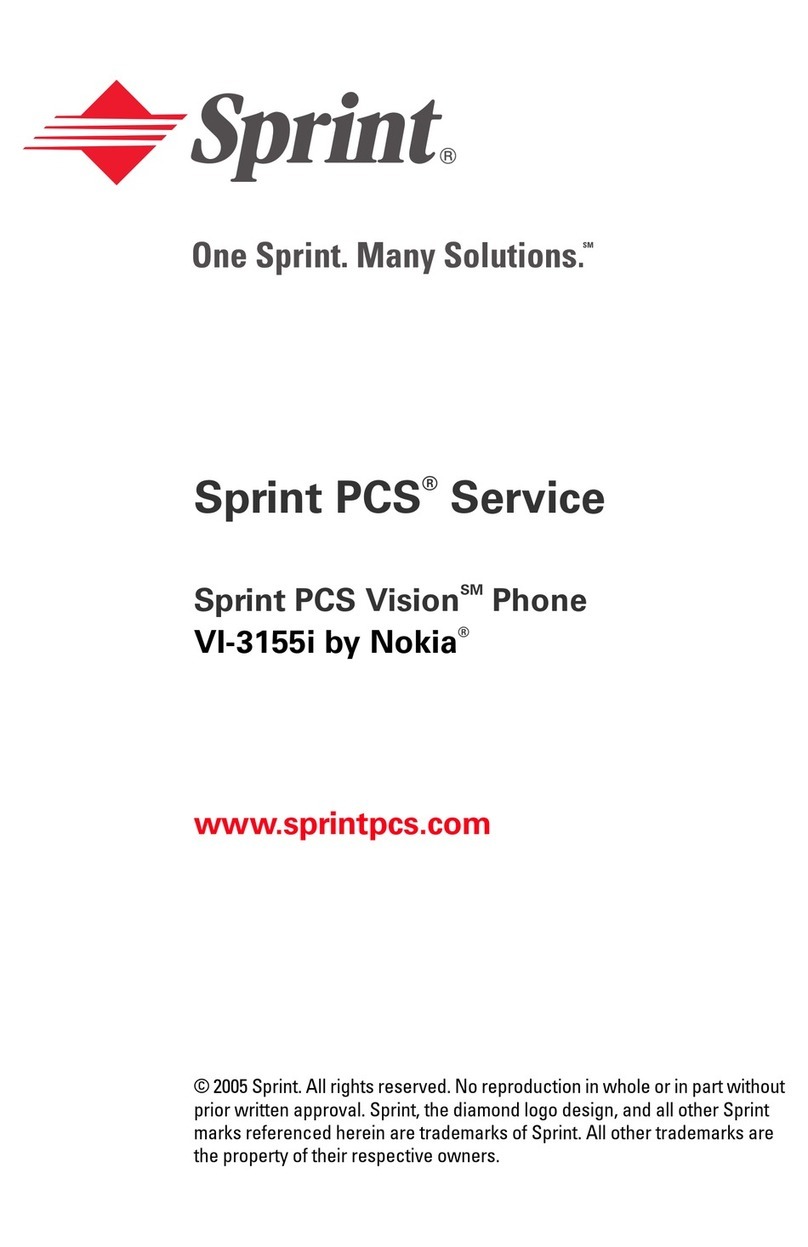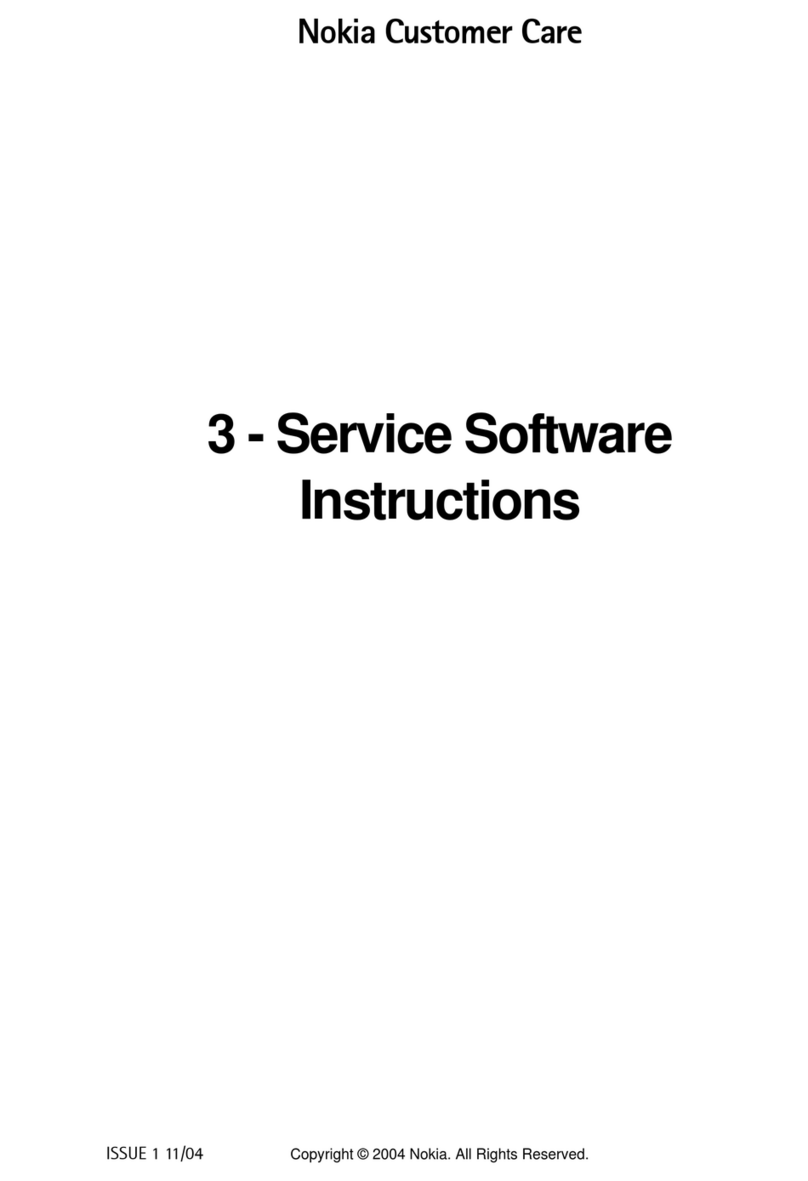
6015/6015i/6016i/6019i (RH-55), 6012 (RM-20)
Troubleshooting - RF Nokia Customer Care
Page 2 ©2004 Nokia Corporation Company Confidential Issue 1 08/2004
Contents Page
RF Troubleshooting......................................................................................................................................... 5
Phone Components ..................................................................................................................................... 6
General Troubleshooting ...........................................................................................................................8
TX Power Low............................................................................................................................................. 8
Receiver Not Working Properly............................................................................................................. 8
Phone Cannot Make a Call..................................................................................................................... 8
Transmitter Parts .........................................................................................................................................9
Cell Transmitter Block Diagram ......................................................................................................... 10
Transmitter Schematics ...........................................................................................................................11
Transmitter Troubleshooting Setup ......................................................................................................13
AMPS TX Setup....................................................................................................................................... 13
Cell TX Setup ........................................................................................................................................... 14
PCS TX Setup........................................................................................................................................... 16
Transmitter Troubleshooting ..................................................................................................................17
Failed Test: TX PA Detector................................................................................................................. 18
TX DC Probe Points................................................................................................................................ 19
TX RF Probe Points................................................................................................................................. 21
Receiver Troubleshooting ........................................................................................................................22
Receiver Schematics ............................................................................................................................. 24
RF AGC Status......................................................................................................................................... 26
Turning on the RX Path........................................................................................................................ 27
Switching the RX Gain States............................................................................................................ 29
Cell Receiver Check from RF to IQ.................................................................................................... 29
PCS Receiver Check from RF to IQ.................................................................................................... 31
AMPS Receiver Check from RF to IQ................................................................................................ 32
Receiver Diagnostic Signal Tracing................................................................................................... 34
Receiver IF RF.......................................................................................................................................... 34
Receiver IF................................................................................................................................................ 35
Receiver DC.............................................................................................................................................. 37
Receiver Logic Input Voltages............................................................................................................ 38
Alfred (N750) Receiver Troubleshooting .............................................................................................39
Alfred DC Troubleshooting .................................................................................................................. 39
Synthesizer Troubleshooting ..................................................................................................................40
Incorrect PLL Frequencies.................................................................................................................... 40
Synthesizer Block Diagram ................................................................................................................. 41
Synthesizer Schematic ......................................................................................................................... 43
19.2 MHZ VCTCXO Reference Clock .....................................................................................................44
Measuring the AFC Voltage ................................................................................................................ 45
VCTCXO Manual Tuning ....................................................................................................................... 46
VCTCXO and UHF Synthesizer Probe Points .......................................................................................49
UHF Synthesizer Troubleshooting .........................................................................................................50
UHF Synthesizer Schematic................................................................................................................ 52
PCS UHF LO Channel 600 Spectrum................................................................................................. 53
Cell UHF LO Channel 384 Spectrum................................................................................................. 53
RX VHF LO ....................................................................................................................................................54
RX VHF LO (Batman) Schematic ........................................................................................................ 55
TX UHF LO ....................................................................................................................................................56











